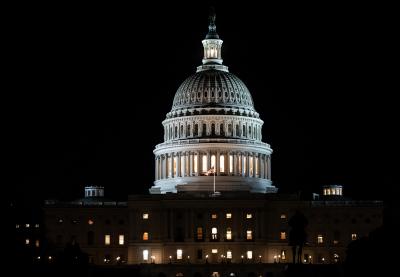Since January 13, the United States has withstood the longest federal government shutdown in its history. With media coverage often more reminiscent of ESPN than CSPAN, it’s easy to frame the story as a two-sided matchup—a gridlock with political opponents and points to score.
But in our classrooms and beyond, the federal government shutdown has profound impact, economic and otherwise. It also presents an opportunity to engage students in discussions about civics (what the government does, who it helps and who it hurts), history, economics and social justice.
As we covered last week, the issue at the center of the shutdown—immigration—should not be presented as a match with two sides on either side of a wall. It’s an issue with human stakes, one framed by dangerous rhetoric.
As long as the shutdown continues, the stakes continue to grow. We know many educators are afraid to talk about issues perceived as hyper-partisan. But this shutdown touches the lives of many students, sometimes in unjust ways. The following resources can provide the necessary background information and reading to help you frame a nuanced discussion grounded in history, civics and your students’ communities.
Provide the Context
All 20 Previous Government Shutdowns, Explained
Vox
The ongoing government shutdown isn’t our first, but it is in many ways unprecedented. This article from Vox offers a short explanation for every government shutdown since the first in 1976. For educators, this is a good place to start for background. For students, it offers information for comparing and contrasting the issues that lead to government shutdowns.
This 149-Year-Old Law Is Why We Have Government Shutdowns
The Washington Post
All government shutdowns since 1981 can trace their roots to the Antideficiency Act of 1870. This short video offers a good history lesson for students who may wonder how a disagreement on policy can ultimately trigger a shutdown of government services and federal worker pay.
Explore the Impact
How the Shutdown Is Starting to Impact Schools
Education Week
There are many ways the current shutdown could touch your students’ lives—including at school. This article provides an overview of the ways your students or school may see services compromised by frozen funding. Educators looking for an overview may also peruse this Parents Magazine story about how the shutdown affects kids.
The Government Shutdown, in Photos
CNN
These poignant photographs—many of which show who and what is left behind, denied and ignored during a shutdown—could be used to spark discussion or writing in the classroom. Consider exploring questions about how a government shutdown negatively affects people and the environment. And take the opportunity to have students consider the role of action: What actions need to be taken by government leaders to reverse these negative effects? What actions could be taken by citizens to help mitigate the damage done?
Government Shutdown Across America
The New York Times
This article offers a coast-to-coast overview of suspended services and the economic effects of the government shutdown, as well as photos that illustrate the diversity of the affected population. The images can serve as writing prompts or comparative texts, while the article itself offers a summary of the breadth of the problem.
Thousands of Migrants in Legal Limbo as Shutdown Forces Multi-Year Court Delays
CBS News
On top of the dehumanizing rhetoric being used in the border wall debate, immigrants and asylum seekers face difficulties due to the government shutdown. With thousands of immigration hearings canceled, many people will face months- and years-long delays before their cases are heard. This article provides examples of how that delay puts those seeking safety—such as LGBTQ asylum seekers from Central America—in precarious, and even dangerous, positions.
Shutdown Leaves Food, Medicine and Pay in Doubt in Indian Country
The New York Times
This article provides background on the ways in which the shutdown can harm Indigenous communities. Given the history of injustice between the government and Native people, this text offers a chance to connect past to present and consider the government’s responsibility to uphold treaties and services.
Trump’s Shutdown Will Hit Black Americans the Hardest
HuffPost
There is history to explore in order to understand why black people are more likely than people of any other racial identity group to work for the federal government—and more likely to suffer tough economic conditions during a shutdown. This article provides an entry point to understanding that history and its present-day impact.
No matter what resources you use to frame a discussion, one point is clear: The government shutdown is more than a political game of wills. History is clear about who will be hit hardest by a delay in services and paychecks.
It’s the work of educators to put context to that reality. They can’t afford not to.
Collins is the Senior Writer for Teaching Tolerance.
